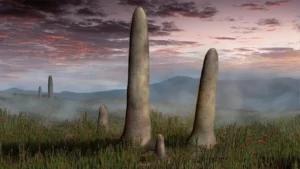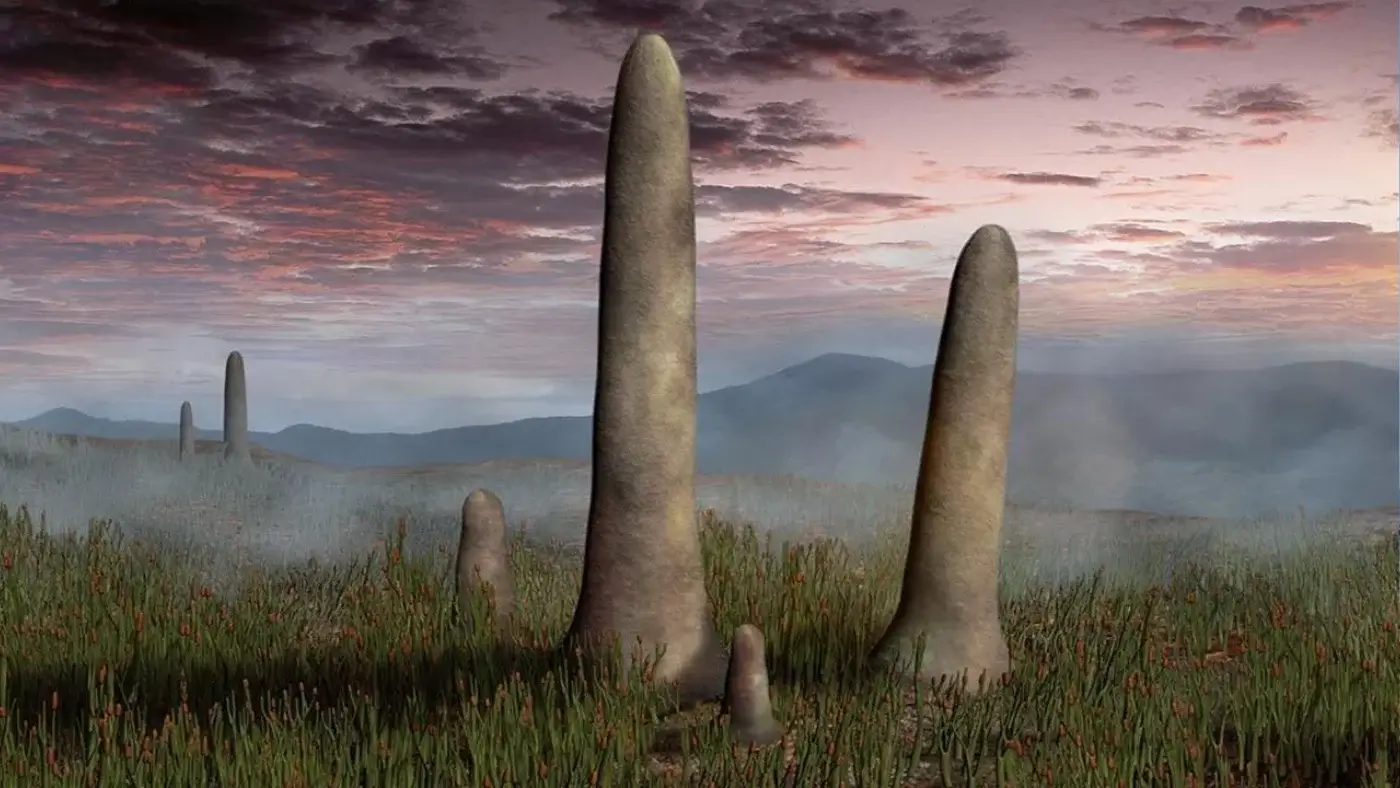Prototaxites are an extinct genus of organisms that lived from the late Silurian to the late Devonian, about 420-370 million years ago. They were characterized by their impressive size – they reached up to 8 meters in length and 1 meter in diameter. Their structure consisted of densely intertwined tubes about 50 micrometers in diameter. Due to their size, Prototaxites were the largest terrestrial organisms of their time.

Since the discovery of these fossils in the mid-19th century, their classification has been a challenge for scientists. Initially, they were thought to be the remains of coniferous trees, but over time doubts about their taxonomic assignment arose. In 2001, Francis Hueber of the National Museum of Natural History in Washington, D.C., proposed that Prototaxites were giant fungi. In 2007, isotopic analysis by Hueber and Kevin Boyce of the University of Chicago showed that variation in carbon isotope ratios in Prototaxites samples supported the hypothesis of their fungal origin.
Despite this research, some scientists have questioned the fungal nature of Prototaxites. In 2017, isotopic analyses of Prototaxites taiti species were carried out to find structures characteristic of modern fungi in the class of bagworms (Ascomycota). However, the results of these studies did not provide conclusive evidence for the fungal classification of these organisms.
The latest research published in bioRxiv, suggests that Prototaxites may belong to a completely extinct group of eukaryotes, unrelated to any modern organism. Microscopic and chemical analysis of the fossils revealed unique features that do not match any known groups such as fungi, plants, algae or lichens. Scientists stress that the morphology and chemical composition of Prototaxites differ from other organisms from Devonian sediments, suggesting their uniqueness.
Prototaxites remain a mystery to paleontologists. Their unique characteristics and lack of modern counterparts make clear classification difficult. These prehistoric organisms remind us how much about the history of life on Earth there is still to uncover, and that evolution led to the development of a variety of life forms, not all of which have survived to our time.
Sources: Wikipedia, ScienceAlert / Photo: zamin.uz








